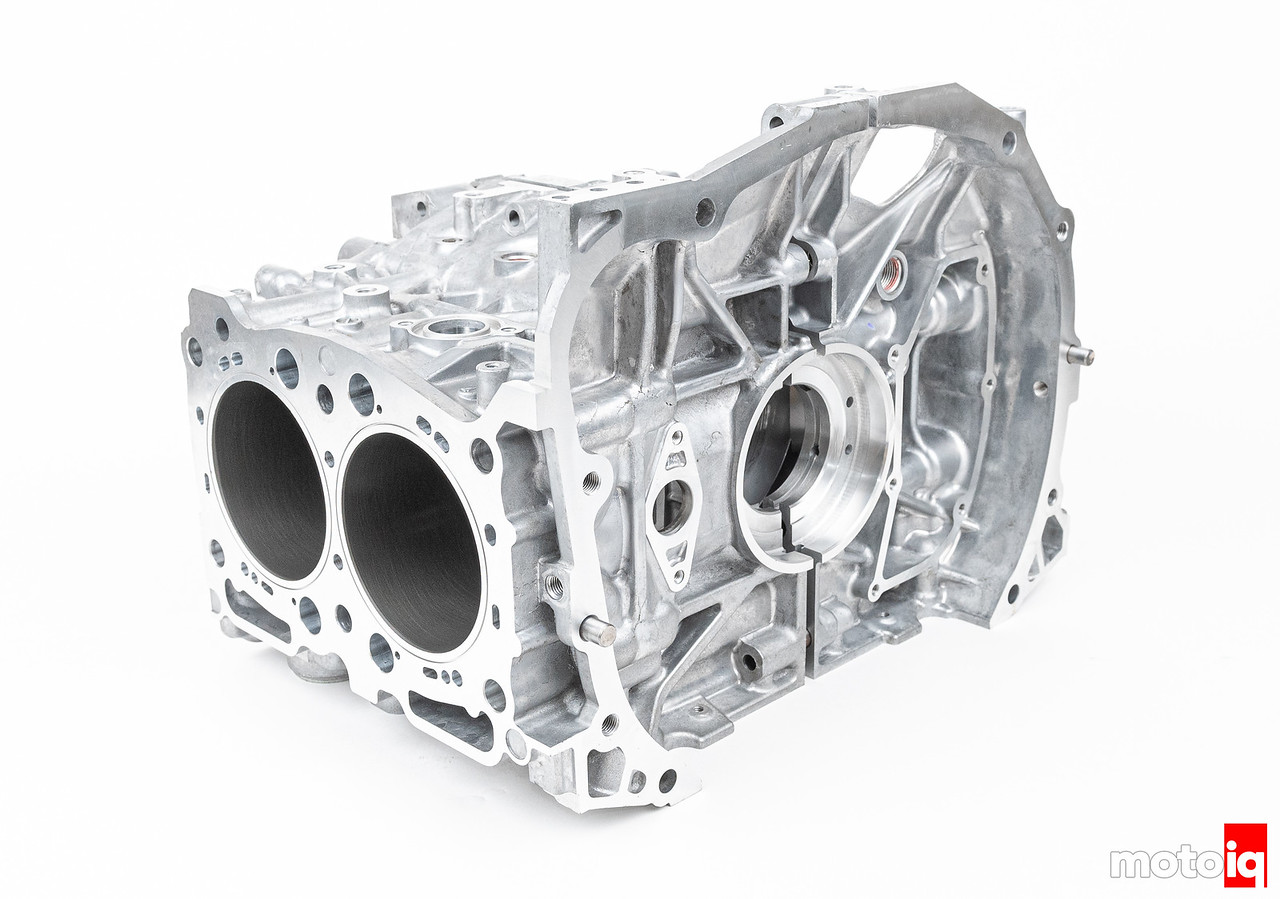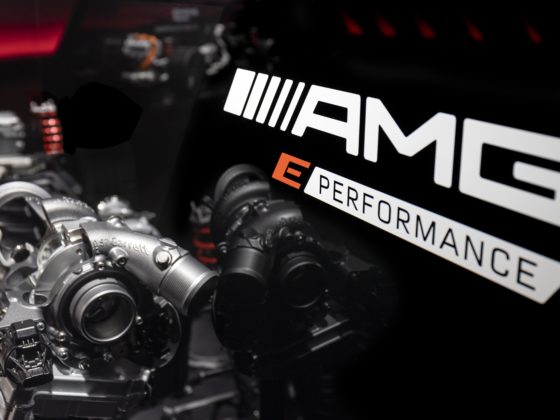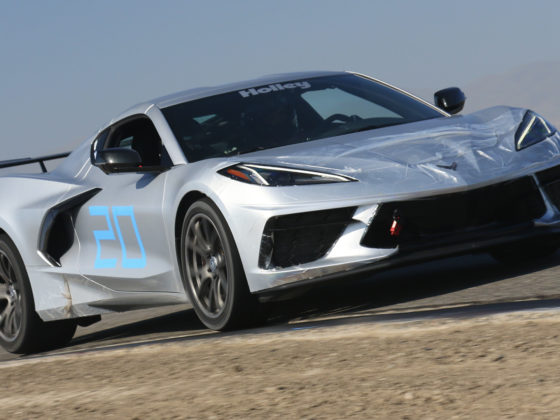
In this side view, you can see the stepped resister. This is very important as it very positively locates the case reinforcement and prevents them from sinking which would cause the gasket to lose clamp. It also gives a lot of engagement to positively lock the cylinders in place and eliminate a lot of case flex.

Another CNC machine carves out the case reinforcement pieces. The reinforcements are made out of cast A356 aluminum as opposed to a more common alloy billet like 6061. In IAG’s testing, the A356 matches the stiffness and thermal expansion of the cases very closely compared to wrought billet aluminum. Using cast aluminum helps prevent thermal distortion of the top of the cylinder bores and keeps the clamp load on the head gasket even, at higher temperatures.

Here are some completed cast A356 block reinforcement pieces after machining.

Some block reinforcement pieces for different locations on the deck. IAG has two dedicated CNC machines pumping these parts out 24/7.

Here is the workstation for the block reinforcement installation. An oven and Dewars of liquid nitrogen are here.

This oven is used to heat the cases to around 200 degrees F. This causes them to expand.




8 comments
Hi Guys,
Love this article – I’ve got one question about the sequence of steps, specifically the CTP Cryogenics treatment step coming in after the torque plate hone/bore. If the tensile strength of the metals are going to be increased would that mean that the same torque rating on the head studs would create less distortion and negate some of the benefits of using a torque plate while machining?
Thanks,
Nick
No.
Our Cryogenic services should come after rough boring, if needed, but before final honing.. Torque ratings should not be altered from specs.. All building techniques should be done to the highest standards not matter what. It is the same as procuring the highest quality parts one can despite sending parts for DCT (deep Cryo Treatment) and other enhancements such as WPC or DLC..etc
As a note, we did not measure any dimensional differences in our cases before and after cryo treating.
Do you notice any differences between the machine work done by Outfront on the video build and and IAG on this one? if so which would you recommend for a Subaru engine build?
They are both high quality jobs but from seeing the process firsthand, IAG has more control over their processes and more state-of-the-art machining centers. IAG also uses deck reinforcements using the same cast metal as the block which is more thermally compatible with the original case. IAG has the 14mm stud option vs 12.5mm. IAG has the receiver groove for O-Rings. These are incremental differences.
What effect , if any does the wpc treatment have on oil retention on the bores?
The dimpled texture probably improves it.